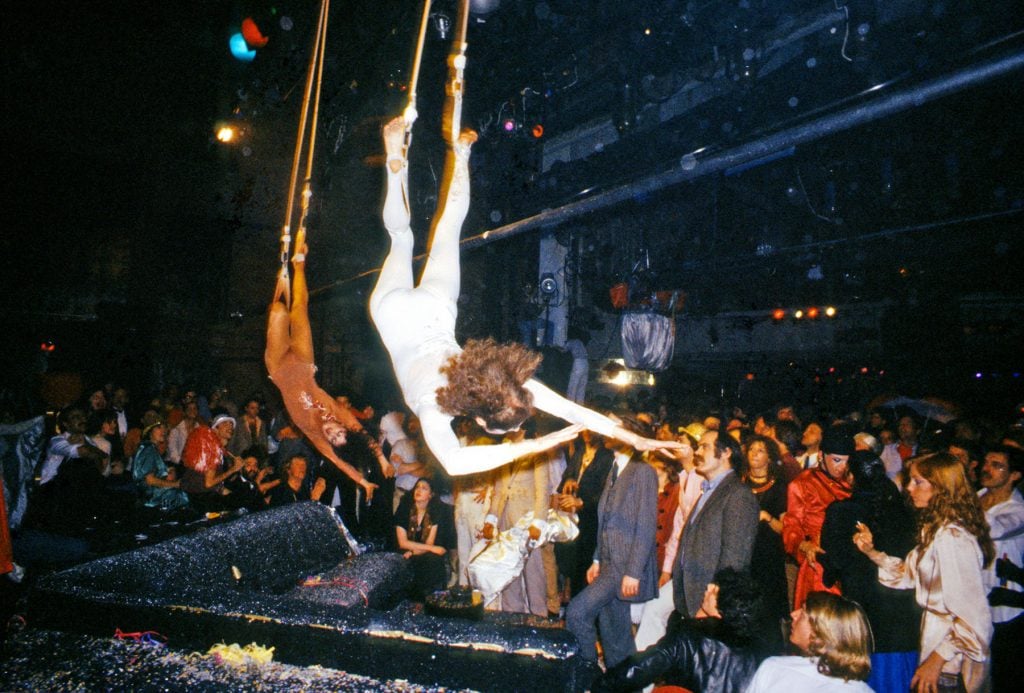Art & Tech
Can an Artwork a Day Keep the Doctor Away? Here Are 5 Ways Scientists Say Art Can Make You Happier and Healthier
Art viewing and art making can lead to greater well-being across ages, nationalities, and income levels.

Art viewing and art making can lead to greater well-being across ages, nationalities, and income levels.

Menachem Wecker

“The beautiful promises happiness,” Friedrich Nietzsche wrote, channeling the 19th-century French writer Stendhal.
It may surprise students of art history—who know legion examples of depressed artists, including many who took their own lives—that research repeatedly bears out a connection between art and joy, and offers a host of other mental and physical health benefits.
Recent studies suggest that engagement with the can help alleviate depression, addiction, antisocial behavior, and more. But very few people are taking advantage of these life-changing perks.
The Pew Research Center’s spring 2021 poll of 19,000 adults in 17 countries found that just 10 percent of U.S. respondents said they found meaning in “hobbies and recreation,” including going to “museums or just having fun in general.” The figure went up to 22 percent among the British, 19 percent of Swedes, and 18 percent of Australian respondents.
Here are five reasons why the amusement-averse majority may want to consider picking up a paintbrush or visiting a gallery once in a while—for their well-being, if not the love of art.

AcroYoga performs a Warrior Bridge at the 2016 chashama Gala. Courtesy of photographer Joe Schildhorn/BFA.
Jess Bone, a University College London research fellow in epidemiology and statistics, has conducted extensive research with colleagues on the arts and well-being.
“I think people are broadly aware that there might be some benefits to arts engagement, but I think they may not always consider just how wide-ranging the impacts could be,” she told Artnet News.
The list of areas that arts consumption can improve or mitigate is staggering: “life satisfaction, purpose in life, positive and negative affect, flourishing, loneliness, social support, self-esteem, depression, cognitive decline, dementia, other health behaviors, childhood adjustment, emotion regulation, chronic pain, frailty, and premature mortality,” Bone said.
In another twist on a common stereotype, cultural engagement is associated with decreased use of alcohol and tobacco—but not marijuana—among 12- to 17-year-olds, Bone and colleagues recently found—at least in the short term. The study “confirms associations between arts and cultural engagement and substance use at a population level amongst adolescents in the U.S.,” they wrote.
They cautioned that over time, however, the gap diminished then disappeared altogether. “Whether sustained engagement in these activities differentially influences the risk of substance use requires further investigation,” they wrote.
Another report, by the National Endowment for the Arts in 2020, analyzed decades of research and hundreds of studies on arts and addiction, recovery, and pain management. “Research indicates that engagement in the arts has significantly positive effects on physical symptoms, psychological health, and social relationships,” it said. (The report focused largely on music therapy, and indicated that more research on art therapy is necessary.)

A ad for the Bob Ross Channel in Williamsburg, Brooklyn. Photo by Ben Davis.
There is emerging evidence that arts and cultural engagement can reduce the likelihood of depression, according to a 2020 systematic review of six studies with about 50,000 participants altogether. Five of the six confirmed an association between arts engagement and lower depression.
However, it can be difficult to rely on participants’ own memories regarding their mental states over a period of time, said Bone (who was speaking broadly, not about this review).
When Bone and colleagues pored over data from more than 8,500 parents and nearly 300 schools from a prior study, they found that adolescents who participated in extracurricular arts programs tended to fare better than those who did not, and the more the better. (Interestingly, that did not apply for in-school arts offerings.)
The 47 percent of parents who said that their children were involved in extracurricular arts in fifth grade reported that, by eighth grade, their kids had improved emotional states, fewer behavioral problems, as well as less hyperactivity, inattention, and difficulty in peer relationships than the other 53 percent of parents reported. Schools also reported that the students who engaged in extracurricular arts were less likely to cut class, engage in physical confrontations, steal, vandalize, bully, or disrupt class.
“Arts may be an effective risk reduction strategy,” the authors concluded.

Acrobats descend from the rafters as part of a New Year’s Eve party performance at Studio 54, New York, New York, January 1, 1978. Photo by Allan Tannenbaum/Getty Images.
“Do the arts make you happy?” asked a 2018 paper. The answer, it found, was that it depends. Attending a large number of similar art events resulted in less happiness, while attending a broader range of types of art events, even if less frequently, correlated with more happiness.
All in all, there is “a comparatively modest, but still significant, effect of arts on happiness,” they concluded. Since the breadth of the arts events played such a key role, the scholars suggest that “the effect of the arts on happiness goes beyond mere escapism or temporary relief and may imply that it is variety of attendance which is important.”
Another study, from 2013, attempted to answer the question by looking at artists themselves. The Danish, English, and Swiss researchers found that although European artists tend to be underemployed, underpaid, and depressed, they exhibit higher job satisfaction, on average, than do non-artists, “mainly due to more autonomy.” (The differences were marginal in the U.K., but more pronounced continent-wide.)
Korean researchers, meanwhile, found last year that art viewing does impact happiness, but it depends on one’s economic status. Those in lower-income brackets found benefits from attending performing arts and movies, while wealthier audience members saw happiness benefits from visual arts experiences.
“These results indicate that the low-income group is more likely to enjoy arts and cultural activities that are more accessible and have lower opportunity costs, but do not require high levels of cultural capital,” the researchers wrote.